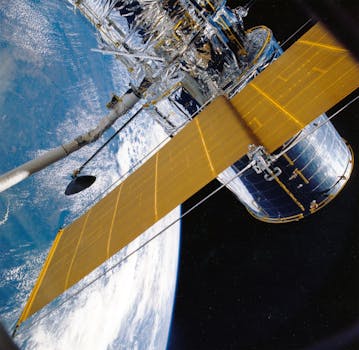From Geostationary to Low Earth Orbit: The Evolution of Satellite Telecommunications in 2023

From Geostationary to Low Earth Orbit: The Evolution of Satellite Telecommunications in 2023
From Geostationary to Low Earth Orbit: The Evolution of Satellite Telecommunications in 2023 has been a remarkable journey, with significant advancements in satellite technology. The satellite telecommunications industry has undergone a substantial transformation, with a notable shift from geostationary to low Earth orbit. This transition has brought about numerous benefits, including improved connectivity, increased efficiency, and reduced costs.
The geostationary orbit, which was the primary orbit used for satellite telecommunications in the past, has several limitations. Satellites in geostationary orbit are positioned approximately 36,000 kilometers above the equator, resulting in high latency and signal degradation. In contrast, low Earth orbit satellites are positioned at an altitude of around 160 to 2,000 kilometers, providing lower latency and better signal quality.
The Advantages of Low Earth Orbit Satellites
Low Earth orbit satellites offer several advantages over geostationary satellites. One of the primary benefits is the reduced latency, which is essential for real-time communication applications such as video conferencing and online gaming. Low Earth orbit satellites also provide better signal quality, resulting in higher data transfer rates and more reliable connectivity.
Another significant advantage of low Earth orbit satellites is the reduced cost of launching and operating them. Low Earth orbit satellites are smaller and lighter, making them less expensive to launch and operate. This has led to an increase in the number of satellite launches, with many companies launching constellations of low Earth orbit satellites to provide global coverage.
Applications of Low Earth Orbit Satellites
Low Earth orbit satellites have a wide range of applications, including satellite broadband, earth observation, and navigation. Satellite broadband provides internet connectivity to remote and underserved areas, where traditional fiber-optic or wireless networks are not available. Earth observation satellites are used for monitoring weather patterns, tracking climate change, and detecting natural disasters.
Navigation satellites, such as the Global Positioning System (GPS), provide location information and timing signals, which are essential for navigation, transportation, and other applications. Low Earth orbit satellites are also used for scientific research, such as studying the Earth’s atmosphere and monitoring space weather.
Challenges and Future Developments
While low Earth orbit satellites offer several advantages, there are also challenges associated with their use. One of the primary challenges is the risk of collisions with other satellites or space debris, which can result in significant damage or even complete loss of the satellite. To mitigate this risk, satellite operators are implementing collision avoidance maneuvers and developing new technologies to track and remove space debris.
Another challenge is the regulatory environment, which is still evolving to accommodate the growing number of low Earth orbit satellites. Governments and regulatory agencies are working to establish clear guidelines and standards for the launch and operation of low Earth orbit satellites, while also ensuring that they do not interfere with other satellite systems or pose a risk to the environment.
Despite these challenges, the future of satellite telecommunications looks promising, with ongoing developments in satellite technology and the increasing demand for satellite-based services. The use of low Earth orbit satellites is expected to continue to grow, with new applications and services emerging in the coming years.




